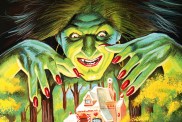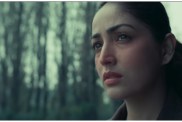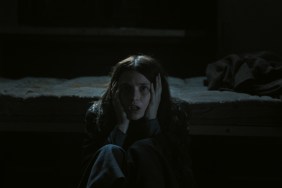
SHOCK’s Kalyn Corrigan selects 10 remarkable women who have made their mark cutting crazed cinema.
Film editing isnt for the weak. Long hours, late nights, tedious precision and tough calls are the necessary evils of the job, and the truth is, it takes a very special person to get it all done by a certain deadline. Most of us just arent built for that kind of meticulous stress. People can live their whole lives and never quite hone the craft to a state of perfection, but those who do manage to become connoisseurs of cutting film can provide a story with its proper justice. Each microscopic details means the difference between highlighting a filmmaker the way they were meant to be seen and botching a movie into a mediocre mess.
On top of all of its challenges, editors must also realize that theyre agreeing to perform a mostly thankless job. Despite the fact that a films ability to play well mainly rides on how effectively the material is edited, in the end, the person who placed together the project is sometimes slightly overlooked. Actors, directors, and even writers are usually recognized, and rightfully so, because they too are crucial components, but in light of the fact that editors dont always get as much appreciation, why not take a moment to say thank you to some of the important people who have helped make some of our favorite movies come to life? Specifically, why dont we thank some of the women who are secretly conjuring up impeccable storylines behind the scenes?
GREEN ROOM, KILL LIST, CARNAGE PARK, and MAD MAX: FURY ROAD what do they all have in common, besides the fact that they are all awesome movies? They were all edited by women. Thats right, some of the coolest, most kick-ass genre flicks out there were cut together by a lady, in a dark room, fueled by caffeine and pure drive.
Its time these gals got some gratitude, and SHOCK is going to give it to them.
Yana Gorskaya (WHAT WE DO IN THE SHADOWS)
When making a mockumentary, cutting it to look like a documentary, as in splicing scenes together in an organized manner, inserting static images, and adding voiceover where appropriate is very important. Otherwise, it just looks like a regular movie where the actors are constantly breaking the fourth wall. Although it can be a daunting challenge, editor Yana Gorskaya makes it look easy in Jemaine Clement and Taika Waititis hilarious parody flick, WHAT WE DO IN THE SHADOWS. A film that thrives on its actors witty improvisations and top notch editing, this fictitious account of a film crew following around a group of modern day vampires is so well put together and laugh out loud funny that it rivals the cult classic that arguably started it all, THIS IS SPINAL TAP. While many movie fans are quick to dismiss the difficulty of throwing together a comedy thats actually funny and stays funny throughout the entire runtime, which is the result of an unfortunate stigma attached to the genre that assumes that laughs are not hard to come by, the truth is that editing for comedy is one of the most difficult jobs in the industry. Its so easy to slip up and cut too soon or too late. Cutting comedy is a judgment call, and clearly, Gorskaya is a pro at deciding what to keep in, what to take out, and when to end a scene. As a matter of fact, Gorskaya actually faces a somewhat greater challenge than many of her peers with a film like this, because it calls for proficiency in three categories: 1) editing for comedy, 2) editing for a documentary style, and 3) editing for horror. Countless visual inserts are required for this movie, meaning both ancient creature pictures pulled from real evidence, as well as digital effects. Scenes like the one where Nick the human is chased through the house by the vampires and eventually mauled by Petyr are a prime example of why it is so crucial to have someone who knows what theyre doing in the cutting room. Because of Gorskayas excellent craftsmanship, it looks like the vampires are everywhere all at once, like theyre performing magical tricks, and like there truly is no escape for poor Nick on the premises. Hopefully, well see Gorskaya teaming up with Clement and Waititi again in the future. They could certainly use someone with her unique vision on their side.
Sarah Beth Shapiro (FAULTS)
When watching Riley Stearns FAULTS, the mostly single location dreamlike drama about a washed up man named Ansel who discredits mind control for a living, rescuing a girl, Claire, from cult activity, you can feel the desperation in Ansels tired gaze. You can sense the exhaustion, and the uneasy shift in power back and forth between Ansel and Claire as the days roll on. Youre never really sure whos in the right and who is manipulating whom. Extended, purposeful shots help to explore the fundamentals of the cult known only as Faults. It properly conveys the tension that fills the motel room, while also playing with the viewers minds by suggesting that either party could be correct, because the longer we see them speak, the more valid their two different viewpoints become. Thanks to the tired efforts of Shapiro, the viewer winds up almost switching places with Ansel, as Claire begins to toy with his brain by distorting his reality, and starts to convince him that what the cult believes is actually true. When the film is over, its up to the audience to decide whats real and whats not, but the editing lays the foundation that either theory could be credible.
Julia Bloch (BLUE RUIN, GREEN ROOM)
Director Jeremy Saulniers thrilling ventures into everyday vengeance and siege warfare just wouldnt be as gripping without the careful construction of methodically laid out scenes that his editor Julia Bloch pieces together. Proficient in three languages and carrying an extensive resume that includes titles like FOXCATCHER and THE TREE OF LIFE, Bloch has been around the block, but her most noteworthy projects as of late have her working with genre fan favorite Saulnier on his two most popular films. What Bloch brings to the table is an exciting editing style that matches Saulniers tone, cutting where necessary to make his stories feel like they could actually happen in real life, which, in turn, touches his viewers on a personal level. From his characters many flaws to the wickedly gruesome special effects which seem to happen so fast and so realistically that its hard to believe such shocking gore could be structured into the script, Saulnier wouldnt pull nearly as many laughs or as many shrieks of terror from his audience without his key component, his extremely gifted editor Bloch. She understands exactly what hes looking for, and together, theyve put out some of the most human tales of tragedy, mistakes, and redemption onscreen in recent years. To put it simply, theyre a dream team, and it wouldnt be the least bit surprising if Saulnier chose to work exclusively with Bloch for the rest of his days.
Jane Rizzo (MAGGIE, COMPLIANCE)
Winner of best editing at the Reelheart International Film Festival in 2008 for Henry May Long, an intense drama about a friendly reunion, Jane Rizzo has already proven herself years ago with her skilled technique. One of the most important aspects that Rizzo brings to the surprisingly touching zombie flick MAGGIE is the proper and timely inclusion of reactions to the devastating events happening to the characters onscreen. Its not just that the infected Maggie must deal with the fact that shes sick from a zombie bite and will soon pass on and join the ranks of the undead feeding frenzy, but she also has to experience what that means for everyone around her, and the weight that her wounds have on her family. This is very clear to the audience because of a job well done in the editing department. Through quick little glances at her familys faces and expertly inserted close ups of Maggies growing illness as it spreads over her body, the audience is thereby allowed to see the other peoples perceptions instead of being limited to the leads, which makes it easier to understand how each person is feeling, and whether theyd rather see Maggie be taken care of quickly, or long to see her somehow survive her terminal curse. Thanks in large part to Rizzo, MAGGIE is one of the most personal and effective zombie movies in some time, because it takes a sub genre that feels tired and worn, and makes it fresh and new again, through prominent parallels between the outbreak virus and real life deadly diseases.
Plummy Tucker (THE INVITATION, JENNIFERS BODY)
As an inquisitive youngster, Plummy Tucker got her start as a production assistant on the hugely popular 1989 DEAD POETS SOCIETY before becoming John Sayles assistant for many years, where she met Karyn Kusama. Since then, she has edited all four of Kusamas films, including GIRLFIGHT, AEON FLUX, JENNIFERS BODY, and THE INVITATION. She and Kusama have developed a close personal relationship, to the point where when Tucker is in the editing room, Kusama will leave her alone for hours at a time and only check on her periodically, as opposed to standing over her shoulder and guiding her every move. The two trust each other, and the results speak for themselves, most notably in their third and fourth films together. In JENNIFERS BODY, Plucker establishes from the beginning through the editing that Jen is a mystical creature from the depths of hell, a.k.a. high school, and that she and Needy have some sort of spiritual connection reminiscent of GINGER SNAPS. Because of Plucker, the sneak up scares work well, like with the way that Jennifer seems to just appear as if she manifested out of thin air, like in football field scene as Jen approaches Jonas, or the moment when she messes with Needy at her home the night that she is forever changed. Where Tucker really shines, though, is in THE INVITATION, the moody, paranoia-fueled 70s style thriller. Tucker does an excellent job of allowing the viewer to see through Wills eyes as the evening progresses, and truly understand how hes feeling, first hand, thereby justifying his suspicion and his grief, which is made evident through long, uncomfortable shots and well timed close-ups as the tension bubbles to the surface of his face. Tucker has become a master of conveying emotions through her cuts, and is in fact a key component to the success of Kusamas endeavors.
Valerie Krulfeifer (DARLING, CARNAGE PARK, POD)
The girlfriend of writer/director Mickey Keating, Valerie Krulfeifer and her beau are an impressive united front, churning out film after film for a total of four movies released together, with another, PSYCHOPATHS, on the horizon. Starting their partnership in 2015 with POD, the two have been inseparable ever since, and have made a name for themselves as workaholics who are putting everyone else in the industry to shame. Oh, and did I mention that both of them are under the age of thirty? To say that their turnout is impressive would be a vast understatement. However, aside from Krulfeifer work ethic, which is just as impressive as Keatings, whats so remarkable about her editing skills is her ability to adjust her style to fit whatever type of genre shes dealing with at the moment. DARLING is a slow burn psychological mind warp. POD is an homage heavy sci-fi conspiracy thriller. RITUAL is a straight up slasher. Its hard to believe that the same person directed all of these films, but its perhaps even harder to believe that the same person could have cut all of these vastly different films appropriately and effectively. Without Krulfeifer meeting such quickly approaching deadlines at her boyfriends side, it seems like it would be nearly impossible for Keating to deliver such a multitude of projects within such a small period of time. The fact is, theyre lucky to have each other, and it will be exciting to see where the future takes Krulfeifer and her top tier cutting room talents.
Margaret Sixel (MAD MAX: FURY ROAD)
The reason why MAD MAX: FURY ROAD is so effective, other than the fact that filmmaking king George Miller conducted such crazy stunts, is that everyone is constantly on the move. In fact, all of the characters are moving at such a speed from the time the film begins that they dont actually come to a full stop until about thirty minutes into the movie. Still, if edited poorly, their journey could feel more like one long road trip rather than a fast-paced action thriller. An action movie lives and dies by its editing. Cut too early, and you can frustrate your audiences who are looking for some exciting combat. Cut too late, and you risk boring them. The tension of the movie is only as good as its editing, and Margaret Sixel, wife and business partner to George Miller, brings undeniably riveting and pulse-pounding intensity to this film. Her editing is tight and precise, making a runtime of over two hours feel like its less than forty minutes. The storyline is fast, hard, and instant, but more importantly, its also cohesive. Just because theres a lot going on doesnt mean you dont know whats happening. When one sits back and thinks about it in practical terms, its utterly dumbfounding how taut and purposely strained this mega blockbuster thrill ride actually is. Its easy to see why Sixel won the Academy Award for best editing on MAD MAX last year. In addition, aside from all of her other astounding achievements on this project, its worth noting that the feminist message that Miller makes very prominent in this movie is only increased by the fact that it is a woman who handles the final cut.
Julie Monroe (MUD, MIDNIGHT SPECIAL)
Julie Monroe has become a regular for writer/director Jeff Nichols, which should come as no surprise, since shes worked on well over twenty projects, including THE PATRIOT, PLATOON, JFK, WORLD TRADE CENTER, and Oliver Stones W. Although there shouldnt be any stereotypes as to which sex can edit which types of films, it is admittedly nice to have a prime example of how a woman can work on war films and make them look just as real and rough as any man who would be brought in on the job. When it comes to Jeff Nichols work, such as MUD and the newly released Spielberg-esque thriller MIDNIGHT SPECIAL, Monroe tends to let his endearing personality shine through, as she takes long pauses between the cuts, and creates gentle transitions that take the viewer by the hand and leads them from scene to scene with comfortable ease. It makes you feel like youre really there, like these things are actually happening, which in turn, happens to make the characters onscreen that much more relatable.
Sarah Adina Smith (THE MIDNIGHT SWIM, HOLIDAYS)
Heres an example of a talented headstrong lady who takes charge by writing, directing and editing all of her own work. Her first feature length film, THE MIDNIGHT SWIM, tells the story of three sisters who are in the midst of mourning their late mother. Together, the girls travel to their mothers old lake property to go through her belongings and decide what to do with the estate, but what they find down by the lapping shoreline amounts to more than home movies and nostalgia. As the film rolls on, their strange discoveries begin to morph into a question are they uncovering a centuries old secret of reincarnation, or are they simply enabling their mentally troubled sister June? Through her sleek editing style, Sarah Adina Smith creates a hazy dreamland thats so intoxicating it actually convinces you that either answer is a real possibility. Her next project, the Mothers Day segment of the horror anthology HOLIDAYS, also carries a calming astral sense of illusory imagery, in which the viewer is never quite sure what exactly is going on. Its really quite amazing how she can take the viewer out of reality and slip them into her little fantasy world, if only for a short period of time. With her shooting and cutting skills combined, Smith is definitely a rising filmmaker to keep an eye on. Shell go far, and following her on her journey will undoubtedly be worth witnessing.
Amy Jump (KILL LIST, SIGHTSEERS, A FIELD IN ENGLAND)
Part of an editors job is to hand pick the best shots in the film, and Amy Jump does not play around. Jump always displays the most breathtaking shots captured by her husband Wheatley, which is mostly due to the fact that Jump is more than just an editor and life partner to this innovative filmmaker shes also his cowriter. Because she is also the screenwriter, she understands, from the beginning, exactly where her director is coming from, and what type of tale hes trying to portray. Shes not just cutting the film, shes continuing her story, so these movies are just as much her vision as they are Wheatleys. Shes just as responsible for these incredible recollections. In KILL LIST, Jump uses a multitude of pre-lap sound transitions to convey a sense of confusion and surreal storytelling, by using dialogue over silent images from the following scene. This effect is very impactful in creating the dreamy imagery that infiltrates and takes over Wheatleys films, which always start out as seemingly somewhat normal before escalating into full-blown maniacal chaos. In A FIELD IN ENGLAND, Jump transitions from a loosely knit plotline of three men running away from battle into a muddled psychedelic mess, where everyones tripping on shrooms and the audience can never really be sure if the hallucinogenic images displayed onscreen are real or not. By taking images from three different scenes and overlapping them in quick, choppy edits, Jump creates a scene that feels like its being shown through a kaleidoscope, thus making the viewer feel like theyre just as dazed and confused as the men on the battlefield. Jump is undoubtedly a vital element to Wheatleys films, and together, the two of them are turning out to be some of the most passionate and creative filmmakers on the scene today.









